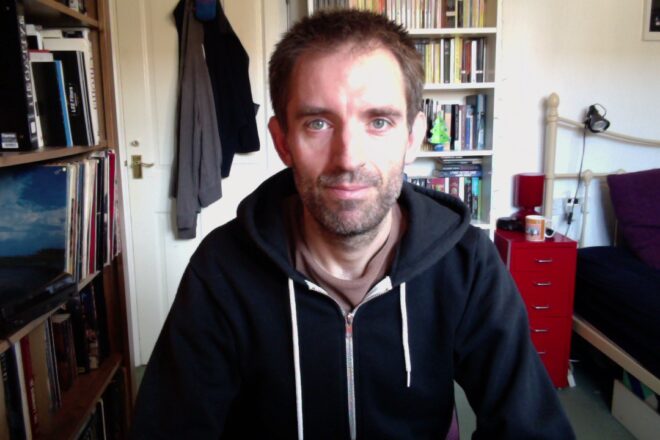This year hasn’t been great for anyone. It certainly hasn’t for me. Even as I’m writing this I’m hearing the news that, in a staggeringly foreseeable U-turn, the Christmas bubble rules have been severely restricted. So how to wrap up this stinker of a year?
I considered making this article about the pandemic’s impact on the film and TV industries and speculating about which changes might be permanent. But who needs more doom and gloom? Not me.
Instead, here are six positive things that I accomplished this year:
- We shot the final block of War of the Worlds: The Attack in February/March, and I was recently shown a top-secret trailer which is very exciting. There is plenty of post work still to do on this modern-day reimagining of the H.G. Wells classic, but hopefully it will see the light of day in a year or so.
- After a couple of lax years, I got back to blogging regularly. This site now has a staggering 1,250 posts!
- I completed and released my first online course, Cinematic Lighting, which has proven very popular. It currently has over 1,000 students and a star rating which has consistently hovered around 4.5 out of 5.
- I made a zoetrope and shot several 35mm timelapses and animations for it, which was a nice lockdown project. Even though the animations didn’t come out that well they were fun to do, and the zoetrope itself is just a cool object to keep on the shelf.
- I wrote my first article for British Cinematographer, the official magazine of the BSC, which will be published on January 15th. In the process I got to interview (albeit by email) several DPs I’ve admired for a while including David Higgs BSC, Colin Watkinson ASC, BSC and Benedict Spence.
- The lockdown gave me the time to update my showreel. Who knows if I’ll ever work again as a DP, but if not, at least I can look back with pride at some of the images I’ve captured over the years.
Despite the restrictions, I hope all my readers manage to find some joy, love and comfort over the festive period. And if not, just consume a lot of mulled wine and chocolate; it’s the next best thing.
In a tradition I’ve neglected for a few years, I’ll leave you with a rundown of my ten favourite blog posts from 2020.
- “The Rise of Anamorphic Lenses in TV” – a look at some of the shows embracing oval bokeh and horizontal flares
- “5 Steps to Lighting a Forest at Night” – breaking down how to light a place that realistically shouldn’t have any light
- “Above the Clouds: The Spoiler Blogs” – including how we faked a plane scene with a tiny set-piece in the director’s living room
- “Working with White Walls” – analysing a couple of short films where I found ways to make the white-walled locations look more cinematic
- “10 Clever Camera Tricks in Aliens“ – the genius of vintage James Cameron
- “The Cinematography of Chernobyl“ – how DP Jakob Ihre used lighting and lensing to tell this horrifying true story
- “5 Things Bob Ross Can Teach Us About Cinematography” – who knew that the soft-spoken painter had so much movie-making widsom?
- “5 Ways to Fake Firelight” – a range of ways to simulate the dynamics of flames, from the low-tech to the cutting edge
- “A Post-lockdown Trip to the Cinema” – an account of the projection sacrilege commited against a classic movie in my first fleapit trip of the Covid era
- “Exposure” (four-part series) – in-depth explanations of aperture, ND filters, shutter angles and ISO










